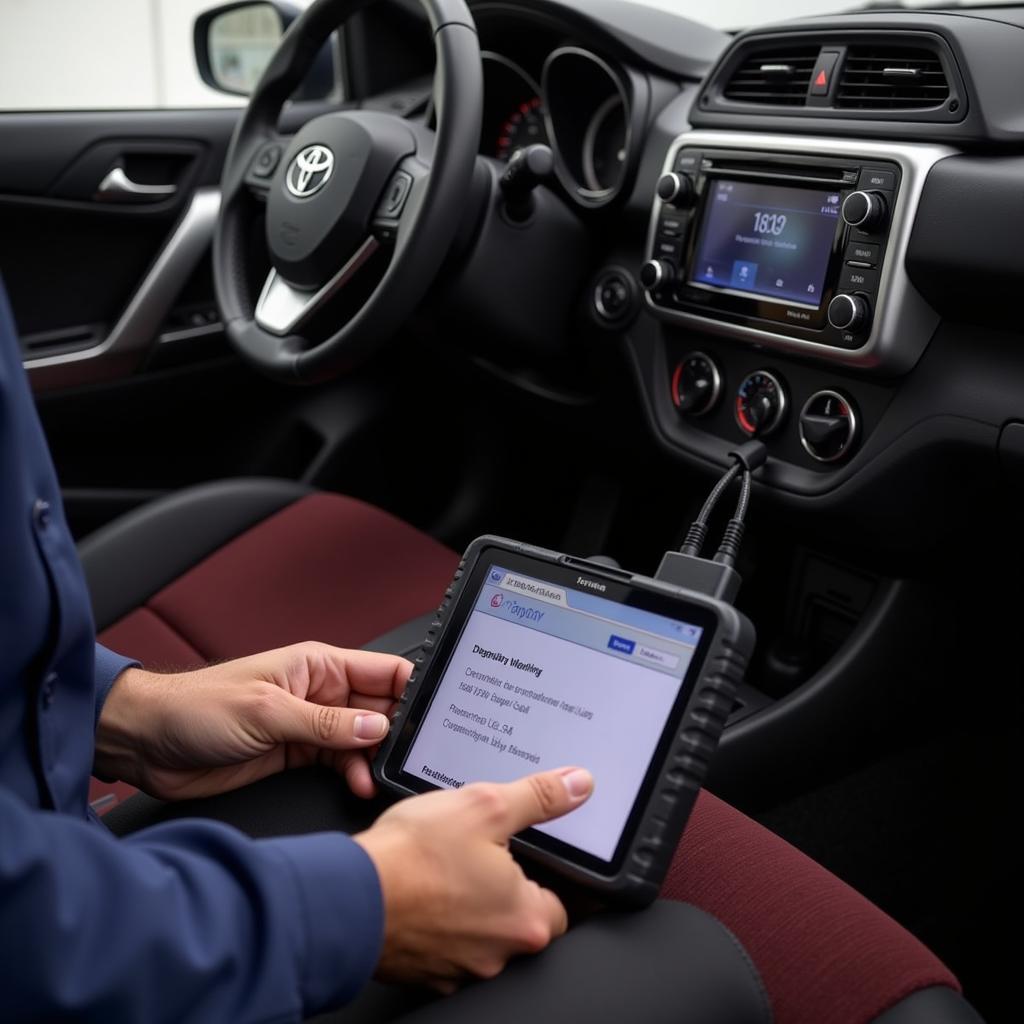AdBlue is a fluid used in many modern diesel cars to reduce harmful emissions. When the AdBlue system malfunctions, a warning light may appear on your dashboard, indicating a problem. While you may think this is a serious issue, in many cases, it can be easily resolved by resetting the AdBlue light.
This guide provides a step-by-step solution to reset the AdBlue light on your car. We’ll cover the common causes of the AdBlue warning light, how to reset it, and what to do if you’re still having trouble.
What Causes the AdBlue Light to Come On?
The AdBlue light typically comes on for a few reasons:
- Low AdBlue Level: This is the most common reason. Your car has a sensor that monitors the AdBlue level in the tank. When the level drops below a certain threshold, the warning light will come on.
- AdBlue System Malfunction: This could be due to a problem with the AdBlue pump, injector, or sensor.
- Faulty AdBlue Sensor: The sensor could be faulty, causing the light to illuminate even if the AdBlue level is sufficient.
- Incorrect AdBlue Fluid: Using the wrong type of AdBlue fluid can cause the system to malfunction.
How to Reset the AdBlue Light
Before attempting to reset the AdBlue light, it’s important to understand that it’s only a temporary solution. If the problem persists, you should consult a qualified mechanic.
Here are the general steps to reset the AdBlue light:
- Top Up the AdBlue Tank: Ensure the AdBlue tank is full. If the light came on due to a low level, this will likely resolve the issue.
- Start the Engine: Turn the engine on and allow it to run for a few minutes.
- Reset the Warning Light: The specific steps for resetting the warning light will vary depending on your car make and model. In some cars, you may need to follow these steps:
- Turn the ignition off.
- Hold the trip reset button while turning the ignition on.
- Continue holding the button until the AdBlue light resets.
Note: If you’re unsure about the correct steps to reset the AdBlue light on your car, consult your owner’s manual.
What to Do if the AdBlue Light Won’t Reset
If the AdBlue light doesn’t reset after topping up the tank and trying the reset steps, there could be a more serious issue. Here’s what you should do:
- Check for Error Codes: Use an OBD-II scanner to check for any AdBlue-related error codes. These codes can provide valuable information about the problem.
- Inspect the AdBlue System: Visually inspect the AdBlue tank, pump, injector, and sensor for any signs of damage or leaks.
- Consult a Mechanic: If you’re unable to identify and fix the problem yourself, it’s essential to take your car to a qualified mechanic.
Frequently Asked Questions (FAQ)
Q: What happens if I ignore the AdBlue warning light?
A: Ignoring the AdBlue warning light can lead to serious issues, including engine damage. In some cases, your car may even refuse to start if the AdBlue level is too low.
Q: Can I use any type of AdBlue fluid?
A: No. Always use the correct type of AdBlue fluid specifically designed for your vehicle. Using the wrong type can damage the AdBlue system.
Q: Is it safe to drive with the AdBlue warning light on?
A: It’s generally safe to drive a short distance with the AdBlue light on, but it’s best to address the problem as soon as possible.
Q: How often should I refill my AdBlue tank?
A: The AdBlue refill frequency depends on your driving habits and the size of the tank. However, most cars will warn you when the level is low, prompting you to refill.
Q: Can I reset the AdBlue light myself?
A: Yes, but only if the light comes on due to a low AdBlue level. If the light stays on after refilling the tank, it’s likely a sign of a more significant issue that requires professional attention.
Remember: If you’re unsure about how to handle the AdBlue warning light, it’s always best to consult your owner’s manual or seek professional advice from a qualified mechanic.


